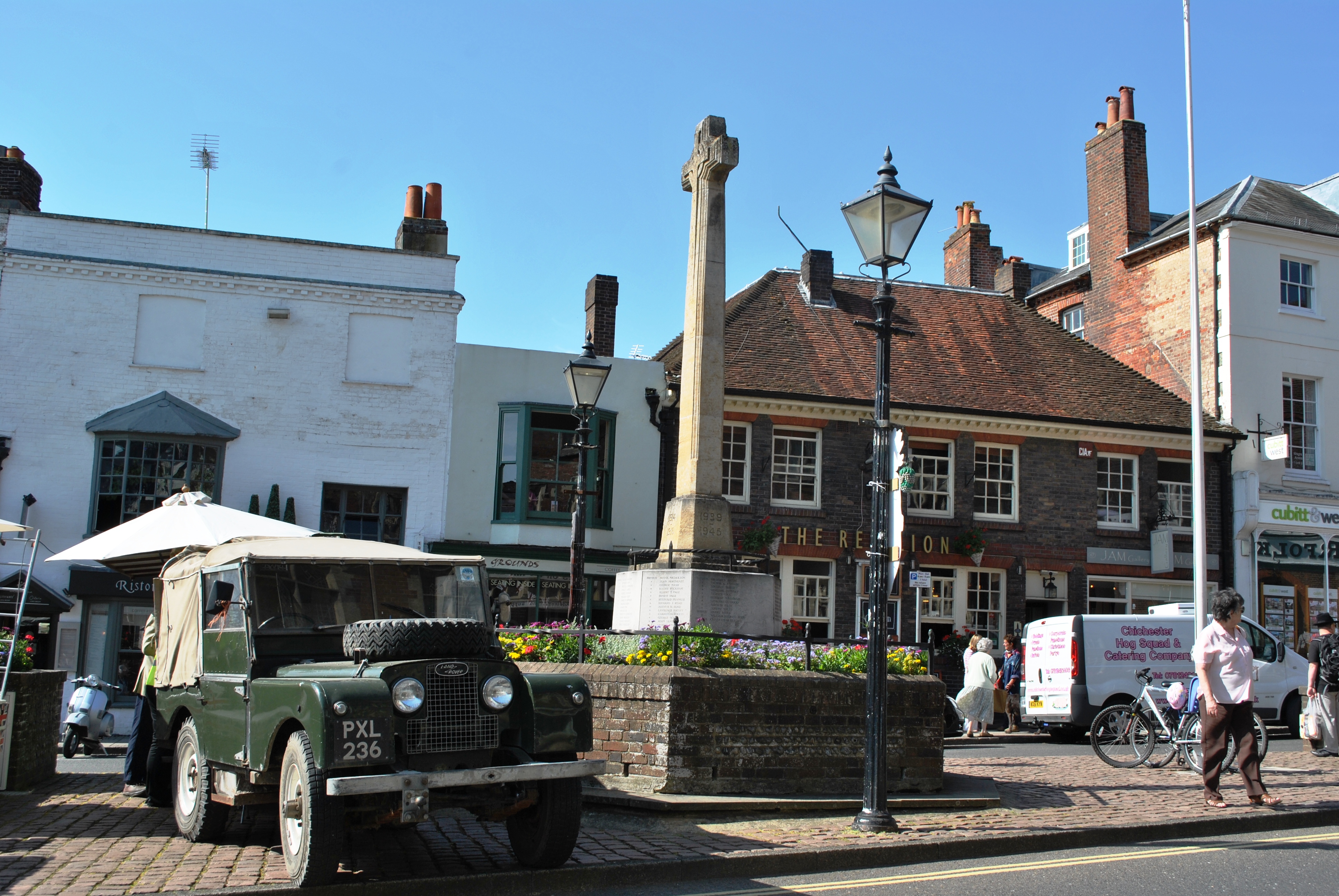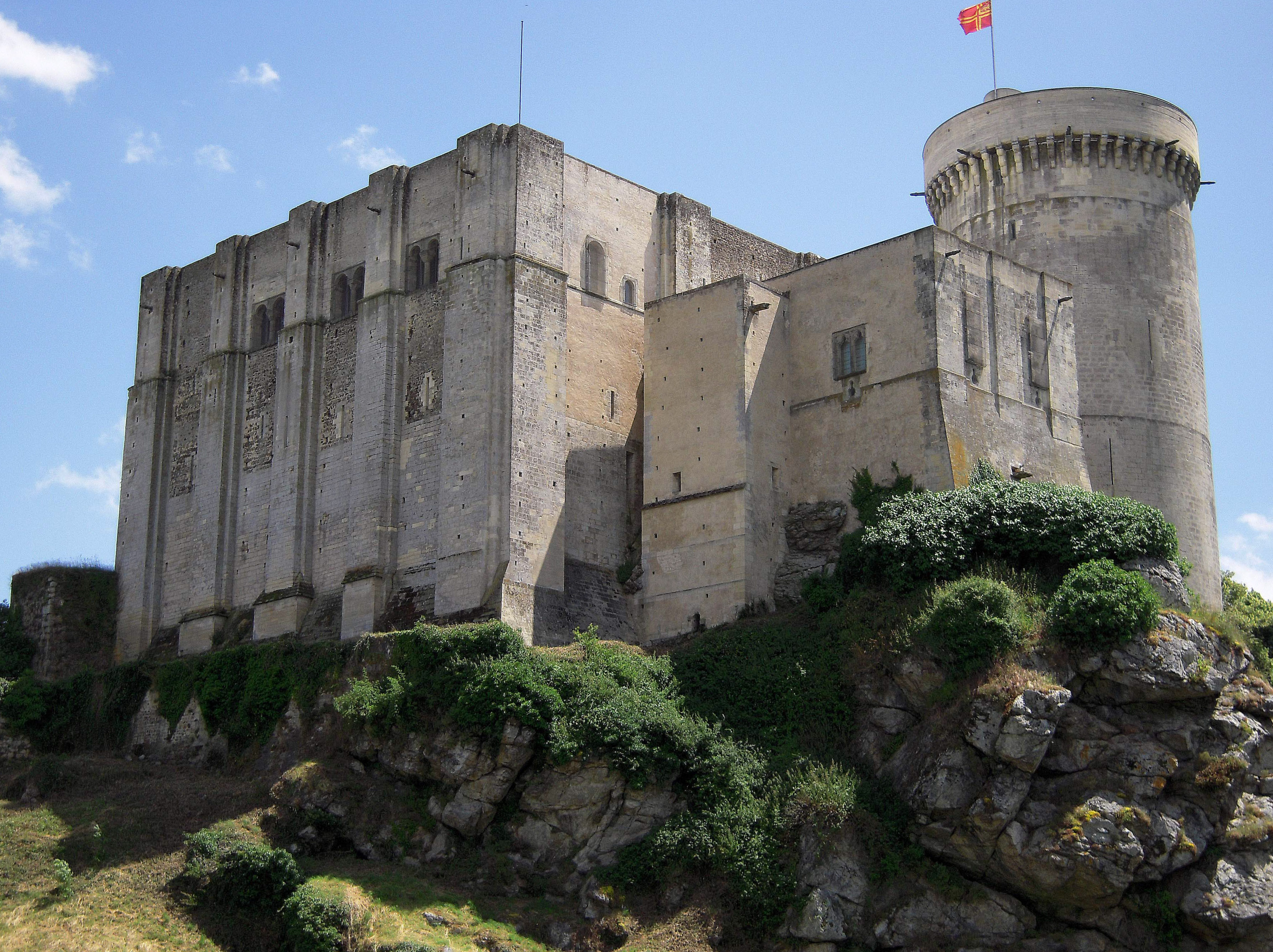|
Baron Aguillon
The Aguillon family, of French origin, were feudal landowners in England who held estates in several southern counties from before 1135 to 1312. Surviving records suggest various branches which all ended without male heirs, the lands going to daughters or sisters and their husbands. The family seems to have been initially associated, perhaps as under-tenants and maybe through marriage, with the Marmion family, witnessing charters alongside them in Normandy in 1106 and later occupying their land in England. The English branches may spring from William Aguillon (died after 1147), a descendant of the viscounts of Chaumont, who was seigneur of Trie near the French border with Normandy around 1119 and died on the Second Crusade. He married Margaret of Gisors and their son and heir was Enguerrand (died about 1196). Manser may have been a younger son. In England, family members can be found in four apparent groups but establishing definite connections between the four groups may be im ... [...More Info...] [...Related Items...] OR: [Wikipedia] [Google] [Baidu] |
Arundel
Arundel ( ) is a market town and civil parish in the Arun District of the South Downs, West Sussex, England. The much-conserved town has a medieval castle and Roman Catholic cathedral. Arundel has a museum and comes second behind much larger Chichester in its number of listed buildings in West Sussex. The River Arun runs through the eastern side of the town. Arundel was one of the boroughs reformed by the Municipal Reform Act 1835. From 1836 to 1889 the town had its own Borough police force with a strength of three. In 1974 it became part of the Arun district, and is now a civil parish with a town council. Name The name comes from the Old English ''Harhunedell'', meaning "valley of horehound", and was first recorded in the Domesday Book. Folk etymology, however, connects the name with the Old French word ''arondelle'', meaning "swallow", and swallows appear on the town's arms. Governance An electoral ward of the same name exists. This ward stretches north to Houghton ... [...More Info...] [...Related Items...] OR: [Wikipedia] [Google] [Baidu] |
Manorialism
Manorialism, also known as the manor system or manorial system, was the method of land ownership (or "tenure") in parts of Europe, notably France and later England, during the Middle Ages. Its defining features included a large, sometimes fortified manor house in which the lord of the manor and his dependents lived and administered a rural estate, and a population of labourers who worked the surrounding land to support themselves and the lord. These labourers fulfilled their obligations with labour time or in-kind produce at first, and later by cash payment as commercial activity increased. Manorialism is sometimes included as part of the feudal system. Manorialism originated in the Roman villa system of the Late Roman Empire, and was widely practiced in medieval western Europe and parts of central Europe. An essential element of feudal society, manorialism was slowly replaced by the advent of a money-based market economy and new forms of agrarian contract. In examining the o ... [...More Info...] [...Related Items...] OR: [Wikipedia] [Google] [Baidu] |
Henry III Of England
Henry III (1 October 1207 – 16 November 1272), also known as Henry of Winchester, was King of England, Lord of Ireland, and Duke of Aquitaine from 1216 until his death in 1272. The son of King John and Isabella of Angoulême, Henry assumed the throne when he was only nine in the middle of the First Barons' War. Cardinal Guala Bicchieri declared the war against the rebel barons to be a religious crusade and Henry's forces, led by William Marshal, defeated the rebels at the battles of Lincoln and Sandwich in 1217. Henry promised to abide by the Great Charter of 1225, a later version of the 1215 '' Magna Carta'', which limited royal power and protected the rights of the major barons. His early rule was dominated first by Hubert de Burgh and then Peter des Roches, who re-established royal authority after the war. In 1230, the King attempted to reconquer the provinces of France that had once belonged to his father, but the invasion was a debacle. A revolt led by William ... [...More Info...] [...Related Items...] OR: [Wikipedia] [Google] [Baidu] |
Bailiff (France)
A bailiff (french: bailli, ) was the king's administrative representative during the ''ancien régime'' in northern France, where the bailiff was responsible for the application of justice and control of the administration and local finances in his bailiwick ('). Name ''Bailli'' (12th-century French ''bailif'', "administrative official, deputy") was derived from a Vulgar Latin term ''*bajulivus'' meaning "official in charge of a castle", i.e. a royal castellan. History In the late 12th and early 13th century, King Philip II, an able and ingenious administrator who founded the central institutions on which the French monarchy's system of power would be based, prepared the expansion of the royal demesne through his appointment of bailiffs in the king's northern lands (the '' domaine royal''), based on medieval fiscal and tax divisions (the "") which had been used by earlier sovereign princes such as the Duke of Normandy. In Flanders, the count appointed similar bailiffs ( nl, ... [...More Info...] [...Related Items...] OR: [Wikipedia] [Google] [Baidu] |
Lincolnshire
Lincolnshire (abbreviated Lincs.) is a county in the East Midlands of England, with a long coastline on the North Sea to the east. It borders Norfolk to the south-east, Cambridgeshire to the south, Rutland to the south-west, Leicestershire and Nottinghamshire to the west, South Yorkshire to the north-west, and the East Riding of Yorkshire to the north. It also borders Northamptonshire in the south for just , England's shortest county boundary. The county town is Lincoln, where the county council is also based. The ceremonial county of Lincolnshire consists of the non-metropolitan county of Lincolnshire and the area covered by the unitary authorities of North Lincolnshire and North East Lincolnshire. Part of the ceremonial county is in the Yorkshire and the Humber region of England, and most is in the East Midlands region. The county is the second-largest of the English ceremonial counties and one that is predominantly agricultural in land use. The county is fourth-larg ... [...More Info...] [...Related Items...] OR: [Wikipedia] [Google] [Baidu] |
Maltby, Lincolnshire
Maltby is a hamlet in the East Lindsey district of Lincolnshire, England. It forms part of Raithby cum Maltby civil parish, and is situated on the A153, south-west from Louth. It is in the civil parish of Tathwell. The Knights Templars had a preceptory here, later owned by the Knights Hospitallers. External links *"Raithby cum Maltby" Genuki GENUKI is a genealogy web portal, run as a charitable trust. It "provides a virtual reference library of genealogical information of particular relevance to the UK and Ireland". It gives access to a large collection of information, with the emphas ....org.uk Villages in Lincolnshire {{Lincolnshire-geo-stub ... [...More Info...] [...Related Items...] OR: [Wikipedia] [Google] [Baidu] |
Nutbourne, Chichester
Nutbourne is a village in the Chichester District of West Sussex, England located east of Emsworth on the A259 road. It is in the civil parishes of Southbourne and Chidham and Hambrook. This small village on the south side of the former A27 road, now the A259, has a loop of road running through it with a ford on the south side of the village centre. It lies at the northern tip of Thorney Channel, an inlet of Chichester Harbour Chichester Harbour is a large natural harbour in West Sussex and Hampshire. It is situated to the south-west of the city of Chichester and to the north of the Solent. The harbour and surrounding land has been designated as an Area of Outstandin .... See also * Nutbourne railway station External links Villages in West Sussex Southbourne, West Sussex {{WestSussex-geo-stub ... [...More Info...] [...Related Items...] OR: [Wikipedia] [Google] [Baidu] |
Seisin
Seisin (or seizin) denotes the legal possession of a feudal fiefdom or fee, that is to say an estate in land. It was used in the form of "the son and heir of X has obtained seisin of his inheritance", and thus is effectively a term concerned with conveyancing in the feudal era. The person holding such estate is said to be "seized of it", a phrase which commonly appears in inquisitions ''post mortem'' (i.e. "The jurors find that X died seized of the manor of ..."). The monarch alone "held" all the land of England by his allodial right and all his subjects were merely his tenants under various contracts of feudal tenure. Etymology Seisin comes from Middle English ''saysen'', ''seysen'', in the legal sense of to put in possession of, or to take possession of, hence, to grasp, to seize. The Old French variations ''seisir'', ''saisir'', are from Low Latin ''sacire'', generally referred to the same source as Gothic ''satjan'', Old English ''settan'', to put in place, set. Tenures subj ... [...More Info...] [...Related Items...] OR: [Wikipedia] [Google] [Baidu] |
Mark (currency)
The mark was a currency or unit of account in many states. It is named for the mark unit of weight. The word ''mark'' comes from a merging of three Teutonic/ Germanic words, Latinised in 9th-century post-classical Latin as ', ', ' or '. It was a measure of weight mainly for gold and silver, commonly used throughout Europe and often equivalent to . Considerable variations, however, occurred throughout the Middle Ages. As of 2022, the only circulating currency named "mark" is the Bosnia and Herzegovina convertible mark. List of currencies named "mark" or similar "Mark" can refer * to one of the following historical German currencies: ** Since the 11th century: the , used in the Electorate of Cologne; ** 1319: the , minted and used by the North German Hanseatic city of Stralsund and various towns in Pomerania; ** 1502: the , a uniform coinage for the ''Wends'' () Hanseatic cities of Lübeck, Hamburg, Wismar, Lüneburg, Rostock, Stralsund, Anklam, among others, who joined th ... [...More Info...] [...Related Items...] OR: [Wikipedia] [Google] [Baidu] |
Château De Falaise
The Château de Falaise is a castle from the 12th-13th century, located in the south of the commune of Falaise ("cliff" in French) in the ''département'' of Calvados, in the region of Normandy, France. William the Conqueror, the son of Duke Robert of Normandy, was born at an earlier castle on the same site in about 1028. William went on to conquer England and become king, and possession of the castle descended through his heirs until the 13th century, when it was captured by King Philip II of France. Because of his association to the location (though not the existing physical structure) it is also known as Château Guillaume le Conquérant or William the Conqueror's Castle. Possession of the castle changed hands several times during the Hundred Years' War. The castle was abandoned during the 17th century. Since 1840 it has been protected as a '' monument historique''. History On the death of Richard II, Duke of Normandy, in August 1026 his son (also called Richard ... [...More Info...] [...Related Items...] OR: [Wikipedia] [Google] [Baidu] |



.jpg)
